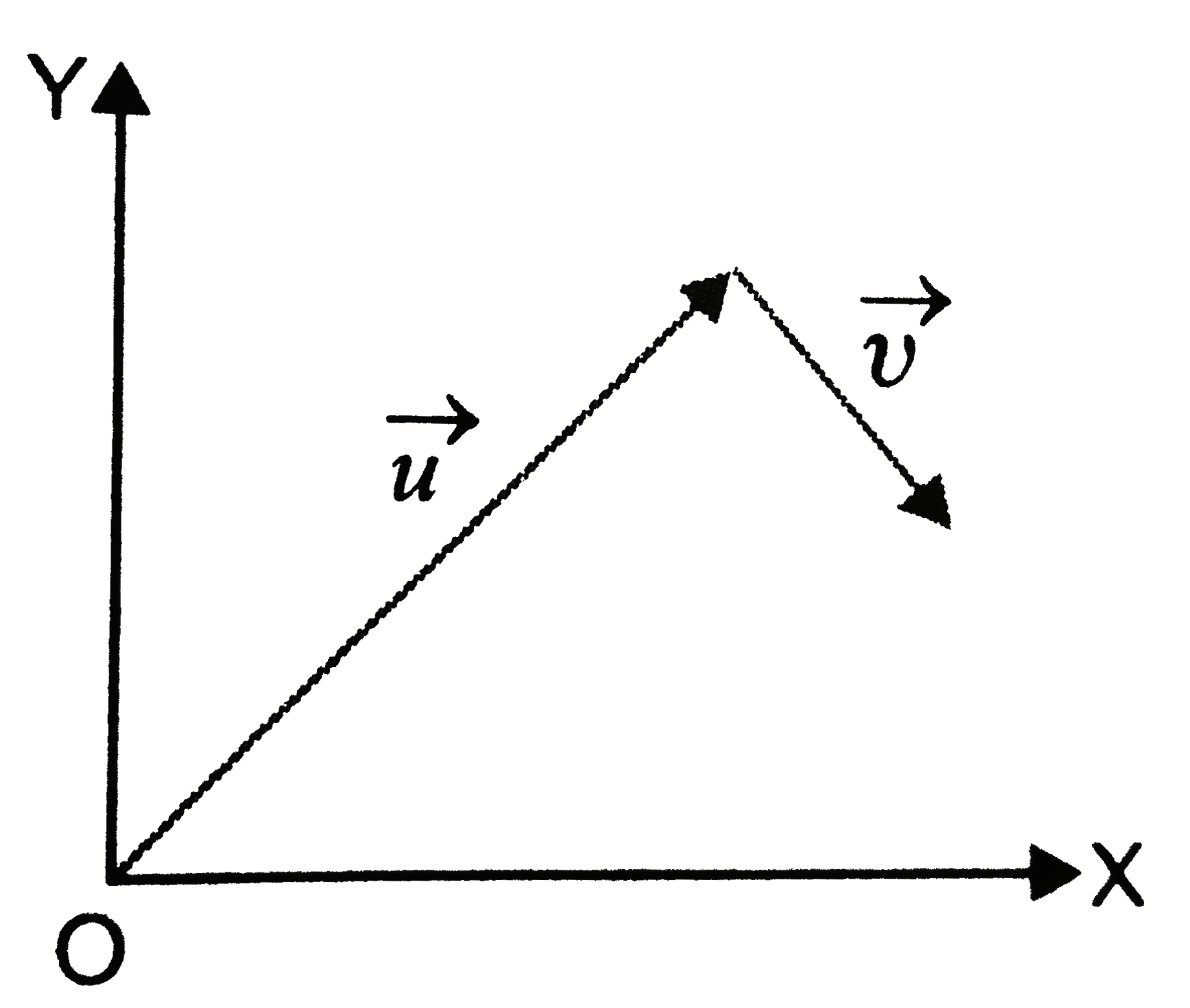A particle of charge +q and mass m moving under the influence of a uniform electric field Eˆi and uniform magnetic field Bˆk follows a trajectory from P→Q as shown in fig. The velocities at PandQ are vˆi and −2vˆj . which of the following statement(s) is/are correct ?

E=34[mυ2qa]
Rate of work done by the electric field at P is E=34[mv3a]
Rate of work done by the electric field at P is zero
Rate of work done by both the feilds at Q is zero.
The correct Answer is:(a,b,d)
In going from P and Q, increase in kinetic energy
=12m(2v)2−12mv2=12m(3v2)
=work done by the electric filed
32mv2=Eq×2aorE=34(mv2qa)
The rate of work done by E at P =force due to E x velocity
=(qE)v=qv[34(mv2qa)]=34(mv3a)
At Q, →v is perpendicular to →E hence no power or rate of work
done by electric field. Rate of work done by magnetic field is
always zero.
Topper's Solved these Questions
- BOOK - CENGAGE PHYSICSCHAPTER - MAGNETIC FIELD AND MAGNETIC FORCESEXERCISE - Archives Comprehension2videos
MAGNETIC FIELD AND MAGNETIC FORCES
- BOOK - CENGAGE PHYSICSCHAPTER - MAGNETIC FIELD AND MAGNETIC FORCESEXERCISE - Archives Integer1videos
MAGNETIC FIELD AND MAGNETIC FORCES
- BOOK - CENGAGE PHYSICSCHAPTER - MAGNETIC FIELD AND MAGNETIC FORCESEXERCISE - Archives Single Correct18videos
MAGNETIC FIELD AND MAGNETIC FORCES
- BOOK - CENGAGE PHYSICSCHAPTER - KINETIC THEORYEXERCISE - Question Bank31videos
KINETIC THEORY
- BOOK - CENGAGE PHYSICSCHAPTER - Magnetism and MatterEXERCISE - Question Bank50videos
Magnetism and Matter
Similar Questions
A particle of charge q and mass m starts moving from the origin under the action of an electric field →E=E0ˆi and →B=B0ˆi with velocity →v=v0ˆj. The speed of the particle will become 2v0 after a time
View SolutionAn alpha particle moving with the velocity →v=uˆi+ˆj ,in a uniform magnetic field →B=Bˆk . Magnetic force on alpha particle is
View Solution
Knowledge Check
- Question 1 - Select One or More
A particle of charge +q and mass m moving under the influnce of a uniform electric field Eˆiand a uniform magnetic field Bˆk follows trajectory from P to Q as shown in figure. The velocities at P and Q vˆi and −2vˆj respectively. Which of the following statement(s) is/are correct
 AE=34mv2qaBRate of work done by electric field at Pis 34mv3aCRate of work done by electric field at P is zeroDRate of work done by both the fields at Q is zero
AE=34mv2qaBRate of work done by electric field at Pis 34mv3aCRate of work done by electric field at P is zeroDRate of work done by both the fields at Q is zero - Question 2 - Select One
A particle of charge q and mass m starts moving from the origin under the action of an electric field →E=E0ˆiand→B=B0ˆi with a velocity →v=v0ˆj. The speed of the particle will become 2v0 after a time.
At=2mv0qEBt=2Bqmv0Ct=√3Bqmv0Dt=√2mv0qE - Question 3 - Select One
A particle ( mass = m and charge = q ) is moving in a region in which there exists a uniform electric field E→i and a uniform magnetic field Bˆk. At t = 0 , the particle is at ( 0,a ) and is moving with vˆi. After some time, the particle is located at ( 2a, 0 ) and has a velocity −2vˆj , then which of the following is true ?
AE=32(mv2qa)Bat the initial moment, the rate of work done by electric field is 34(mv3a)CE=38(mv2qa)Dat the initial moment, the rate of work done by electric field is 316(mv3a)
A particle of charge q and mass m released from origin with velocity →v=v0ˆi into a region of uniform electric and magnetic fields parallel to y-axis. i.e., →E=E0ˆjand→B=B0ˆj. Find out the position of the particle as a functions of time
Strategy : Here →E∣∣→B
The electric field accelerates the particle in y-direction i.e., component of velocity goes on increasing with acceleration
ay=Fym=Fem=qE0m
The magnetic field rotates the particle in a circle in x-z plane (perpendicular to magnetic field) The resultant path of the particle is a helix with increasing pitch.
Velocity of the particle at time t would be
→v(t)=vxˆi+vyˆj+vzˆkView SolutionIf the vectors 2ˆi−qˆj+3ˆkand4ˆi−5ˆj+6ˆk are collinear then find the value of q.
View SolutionAn electron of charge −e, mass m, enters a uniform magnetic field →B=Bˆi with an initial velocity →v=vxˆi+vyˆj. What is the velocity of the electron after a time interval of t seconds?
View SolutionFigure 2 (EP). 13 shows the orientatione of two vectors →u and →v in the (XY) plane.
If →u=aˆI+bˆj and →v=pˆ+qˆj which of the following is correct ?
 .View Solution
.View SolutionA particle having change q and m is projected with velocity →v=2ˆi−3ˆj in uniform electric field →E=E0.ˆj change in momentum |Δ→p| during any time interval t is given by :
View Solution

